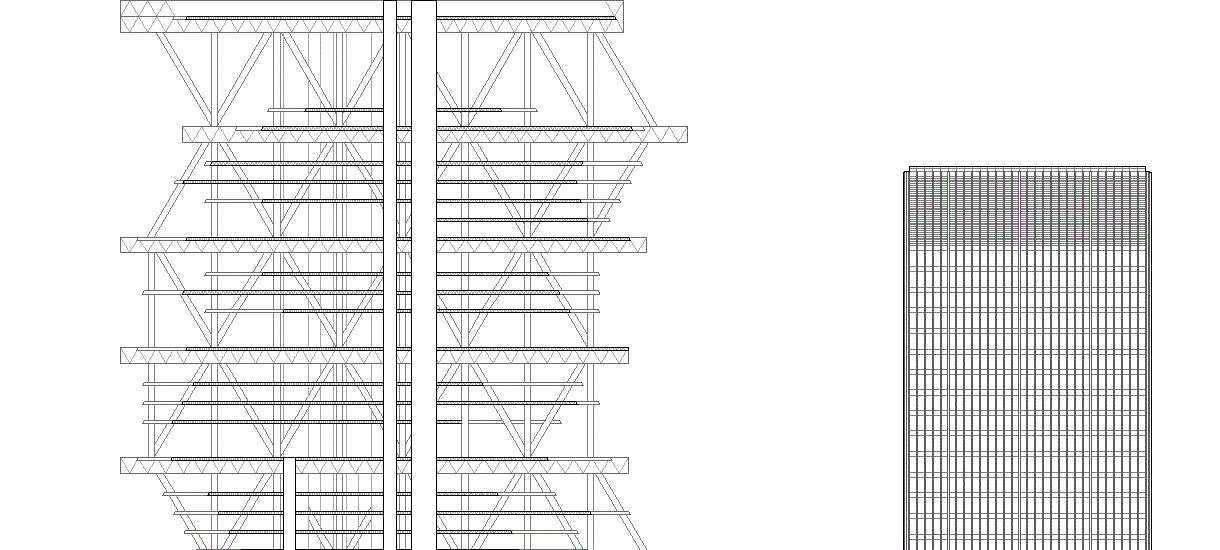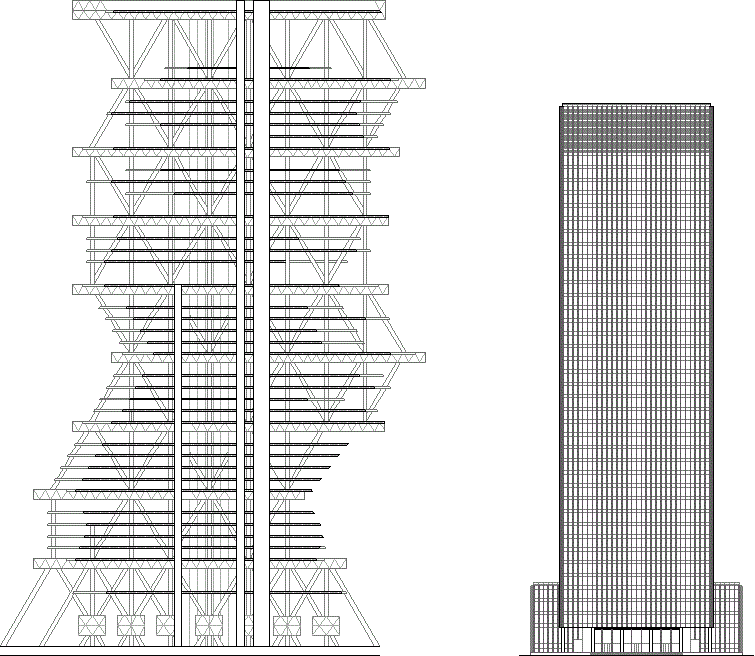The Philadelphia School, deterritorialized | mélange |
Louis I. Kahn Anne Griswald Tyng | City Tower |
|
The very first guest lecture I attended in architecture school was delivered by Esther Kahn, September 1975. I remember virtually nothing of what Esther Kahn said, except she surprised us all with the fact that Stauffer Hall, home of our architectural studios, was designed by the office of Paul C. Cret. Also, during the post lecture q+a, a fellow first year student asked Esther Kahn if Louis Kahn ever designed a Miesian tower. If memory serves correctly, that student didn't even survive the first semester. |
|
| 1957 City Tower Louis I. Kahn Anne Tyng |
|
| 1954-58 Seagram Building Ludwig Mies van der Rohe |
2007.10.14 17:52 |
|
|
"Yes, architects sometimes used to make stuff up just to justify (the shape) their designs." |
www.quondam.com/40/4012l.htm | Quondam © 2018.08.06 |


